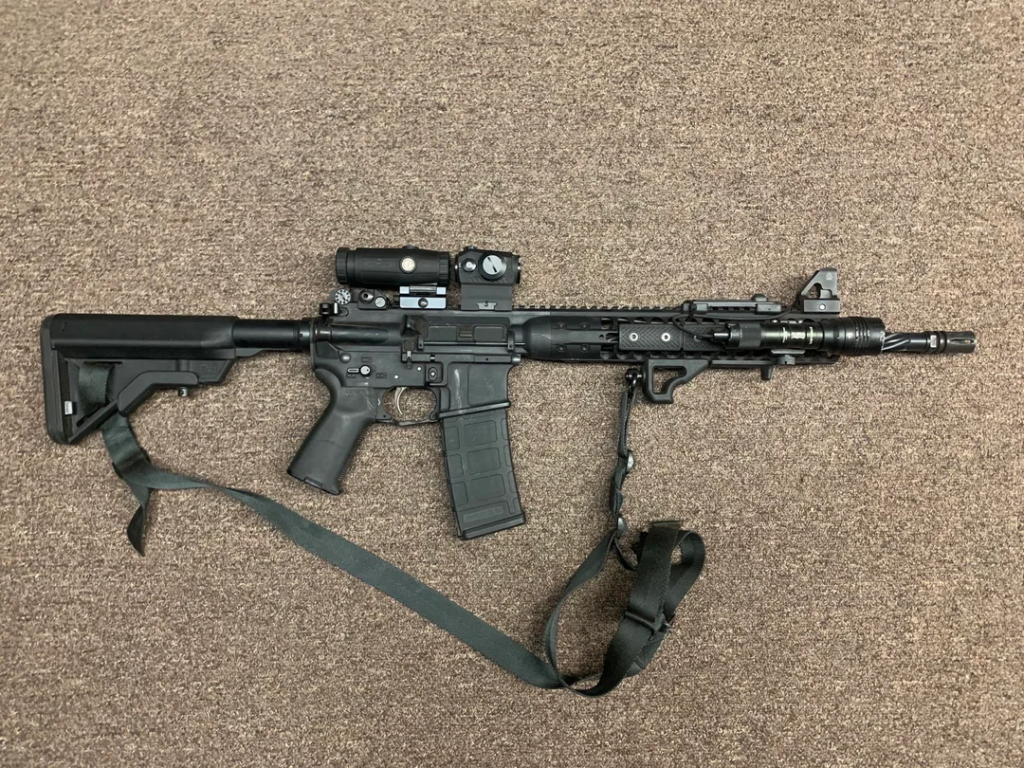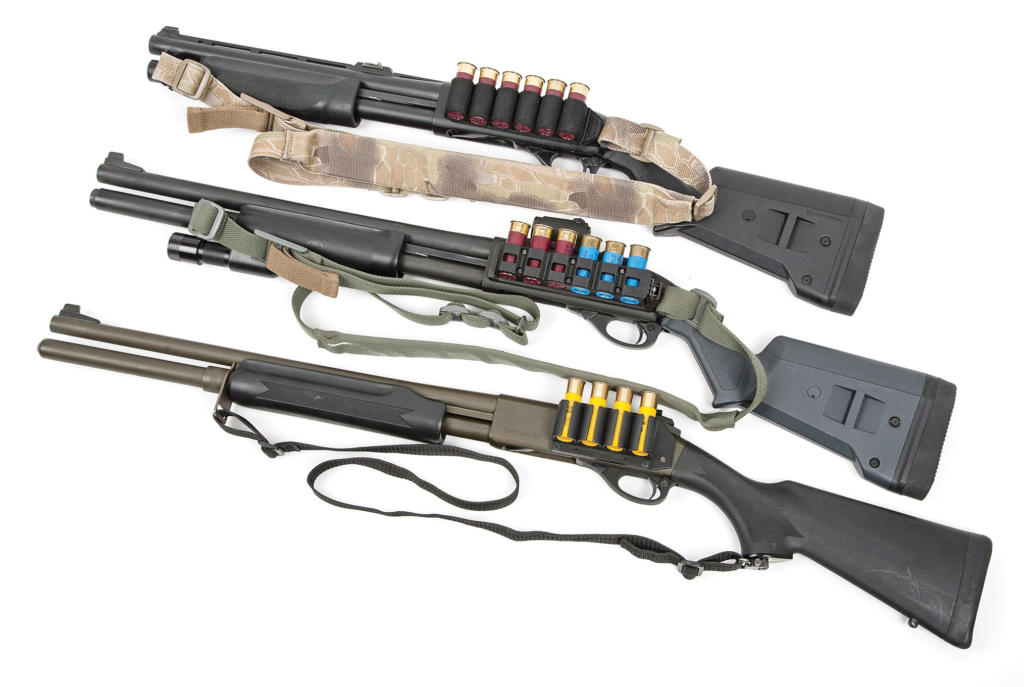Today we’re going to take a look at home defense guns. There are many choices available for the task, some are more suitable than others. So lets break down the categories and weigh the pros and cons of each.
Before we get to the breakdowns, here’s my home def setup and why I chose what I chose. Keep in mind, I have had some very specific training and extensive experience in CQB/MOUT, so my choices aren’t necessarily the best for everyone. I have a 1911 chambered in .45 ACP in a hideaway holster at the head of my bed. It is cocked and locked at all times, but it is not my primary home def weapon.
That’s a Rock River Arms LAR .458, an 18″ barreled AR pattern rifle chambered in .458 SOCOM. Why did I choose that particular weapons system? The answer is somewhat complex, but simply put, I’m extremely confident in the setup and I shoot 300 grain frangible bullets that will stop any threat instantly without worrying about over penetration. I wrote an article called Harden Up a couple of years ago, and in it I said a rifle may not be the best home def option because of the over penetration factor. This particular setup negates that.
That gun, and a battle belt, hang above the door to my bedroom closet. If the need ever arises, its two steps to the closet and I’m in the fight.
Handguns

Handguns are a good choice for home defense generally. They’re easy to handle, easy to store and very useful at home def distances. Choice of gun is a personal thing, but I’d recommend a full-sized autoloader over any of the other types for a few reasons. Typically, they have a higher capacity, are quicker, a lot quicker, to reload than a revolver and a full-sized gun is usually easier to shoot well. As I’ve given recommendations on brand and model before I won’t bother here. If you’re in the market for a new/used home defense handgun, just go with one that has a good reputation.
There is one other thing I’d look for in a home defense handgun. Reliability. And before anyone starts with the whole revolvers always work nonsense, it isn’t true. Pop a primer out of its pocket in your revolver and tell me how reliable it is. Given the state of ammo quality at the moment, that’s a lot more likely than you might think. I’ve unstuck several wheelguns in the past few months, and it isn’t always all that easy to do.
Caliber is less important. Unlike with a carry gun where the obvious choice is 9mm, you don’t have the same kinds of restrictions for a house gun. As I said above, my primary home defense pistol is a 1911 chambered in God’s caliber, .45 ACP. It’s a good choice for residential use. 10mm, the best millimeter, is another good choice, but over penetration can be an issue. The same can be said of the magnum revolver cartridges.
Rifles

Let’s be honest, I’m mainly talking about ARs here. If all you have is grandpappy’s old lever gun or a bolt action hunting rig, well, they will work. But. . .
I have some reservations about recommending rifles for home defense even though a rifle is my primary ‘house gun’. That’s not to say they aren’t effective in that role, they are. It’s just that the calibers they are typically chambered in will go through your intended target and the wall behind them, and the wall behind that. If you don’t believe me, head to YouTube and search for drywall penetration tests.
If you are going to go with a rifle for your home defense gun, there are a few things to look for. You’ll want a shorter barreled rifle. While I think a 20 inch barrel is the best length for a general use AR, the added length can make CQB movements a bit ungainly. A 16″ barrel makes more sense for a dedicated indoor gun.
You’ll want either a forward rail section or MLOK (or any of the other slot-type mounting systems) to mount a flashlight. A quality close quarters optic is also a necessity. I like EOTech for that, but Holosun, Primary Arms and Vortex make good optics at a decent price point.
Shotguns

In all honesty, shottys are probably the best choice for all around home defense. They are easy to use and very effective. A quality pump or autoloader will do everything you need at inside-the-house distances. With the proper choke – Improved Cylinder – and load, there is less worry about over penetration while still having plenty of stopping power and good shot dispersion.
You’ll probably want to mount some sort of optic, either a red dot or holographic, and a flashlight to your shotgun.

What is the proper load? Based on my experiences, I’d go with #4 buckshot. (As an aside, I actually use SSSG shot in my home def shotgun rounds. SSSG is the euro designation for #3 buck or .25″ diameter pellets. #4 is the closest diameter shot you can get readily in the US.) Why? Well, a 1 oz 2 3/4″ 12 ga #4 buck load contains 22 .24″ diameter pellets. The same weight load with 00 buck contains 9 .33″ pellets. That’s 13 more chances to hit the target and the additional pellets eliminate the buckshot ‘donut’ that you see with most 00 buck loads.
This next bit is going to sound repetitive, as I’m constantly banging this particular drum, but. . .
You need to get out and train with whatever you’re using. And I don’t mean go to the range once and say good enough. I currently shoot several times a week. Am I saying you need to do that? Obviously not. But once every couple of months is probably good for most of you.
So MVAP, what’s your home def set-up? Let us know in the comments below.